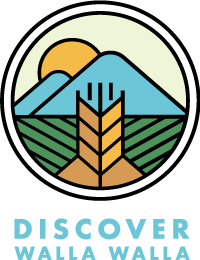South Fork Walla Walla Trail– Wild, But Not Too Wild
A friend took me to the South Fork Walla Walla Trail, telling me it was one of the easiest trails to access Umatilla National Forest … and he’s not wrong. In fact, this has made it a perennial favorite of mine.
The headwaters for the Walla Walla start up in the Blue Mountains, along Tiger Creek Road (which later runs into National Forest Development Road 65, or NF-65). Mill Creek originates in a similar location. The NF-65 is more or less the dividing line between the two river systems, with the Mill Creek headwaters lying to the northwest of the road and the Walla Walla River headwaters coming from the south side of the ridge.
As one might have gathered from the revelation of a “South Fork trail,” there are two primary branches to the Walla Walla River – the north and south forks. Both of these originate in the Oregon Blue Mountains (south of NF-65) and travel down through the hills and canyons, meandering westward, and then joining together right before they arrive at Milton-Freewater.
There are several trails that run specifically along the Walla Walla River. There is a North Fork Walla Walla River trail, way less trafficked than it’s southern cohort. And likewise, you can start on the northern end of the South Fork Walla Walla River. But my favorite Walla Walla River trail, and one of the easier trails to get to, is the South Fork trail, that starts in Oregon, just by Harris Park.
Because the trail starts at a low elevation, it makes it pretty easy to get to throughout the year (excepting snowy seasons.) I’ve been there in nearly every season at this point. During the summer, the canyon can become dry, and it takes on the browns and tans of the parched grasslands that are common in the inland Northwest. But in the spring and early summer, as the snow is melting off, it can get as green as some of its neighboring trails on the west side of the Cascades.
Despite so many visits to the trail, I’ve never backpacked there, which is what you would need to do to hike all the way through. The trail stretches just shy of 40 miles. While I haven’t seen a lot of wildlife on this particular traiI, I do see snakes from time to time — most of them small garter snakes. But a few years ago, I did see my first rattlesnake on this trail.
I have often found wildlife in Umatilla National Forest. Two summers back, a coyote ran out in front of me on a trail – maybe only 20 or 30 feet away. And then last summer, while hiking only a few miles from the South Fork Trail (near Tollgate) I popped over a ridge and came within yards of a bear. Not the first bear I have met in the wild – nor is it likely the last. Thankfully the bear turned out to be more startled than I was and ran off into the woods, but it got my heart racing. The entire experience was exciting (to say the least), but it was also the solid motivation I needed to invest in, and start carrying, bear spray.
When I first moved to Walla Walla, I remember being frustrated that I was so close to the mountains, but there weren’t a lot of easy to find trails (particularly for a Midwest girl from the flatlands who was exceptionally daunted by taking her car up steep mountain forest roads, into unknown regions… full of bears.) But South Fork Walla Walla was kind of like the “training wheels” version of my mountain hiking adventures. It’s nice to have a beautiful and familiar trail like South Fork to come back to when I want to be wild, but not too wild.
Elle Berry is a Walla Walla nutritionist, storyteller, and businesswoman who believes passionately in the power of real food to nourish and better lives. You can learn more about her by following her on Instagram at @a_wellness_story and visiting her website, A Wellness Story.




